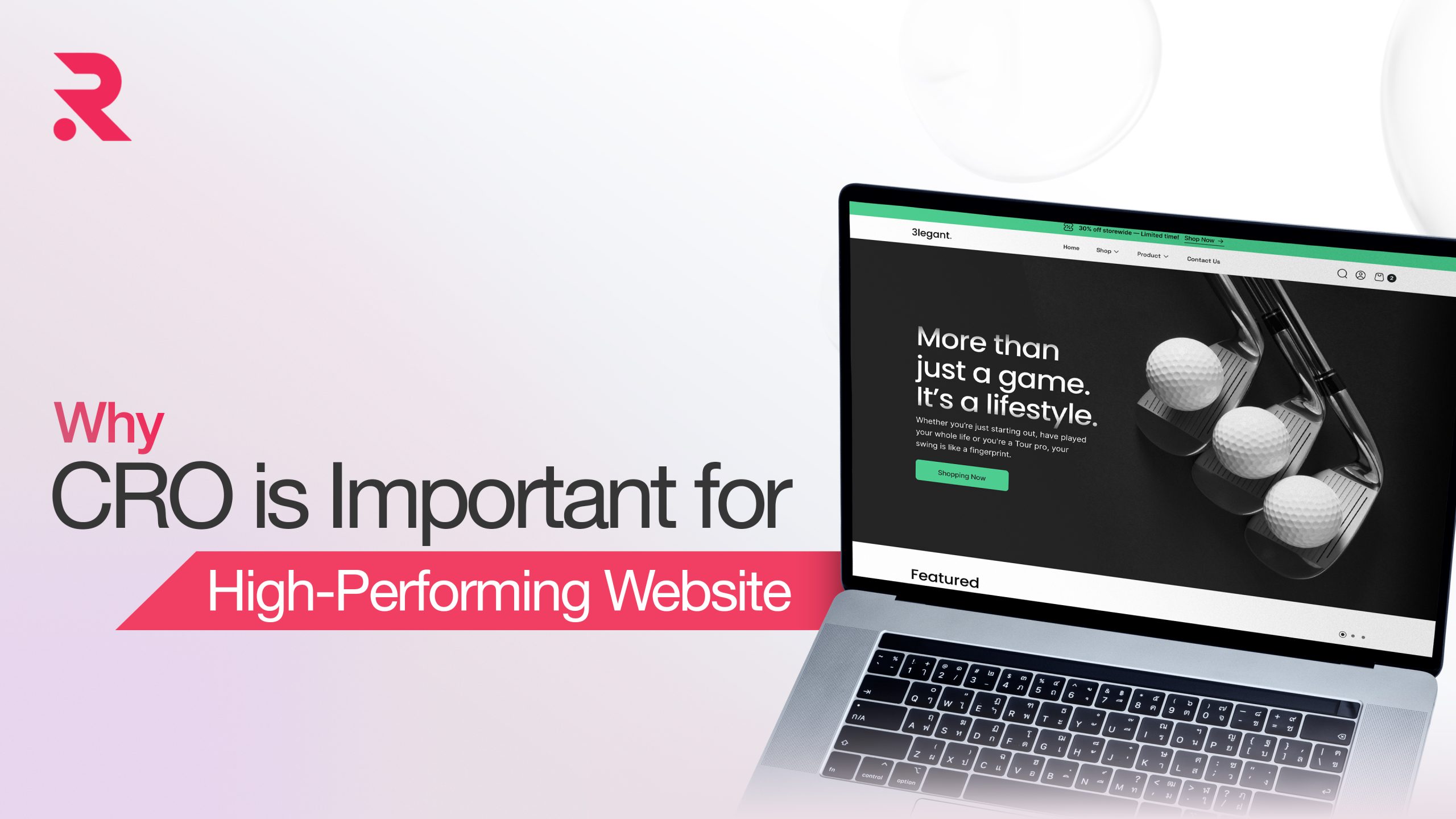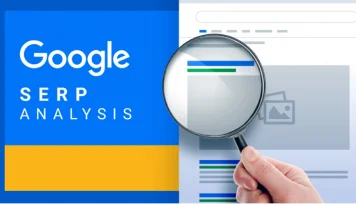How to Scale a Winning Ecommerce Campaign Without Burning Budget ?

Let’s be honest—scaling an ecommerce business can feel like walking a tightrope. On one hand, you’ve got a campaign that’s working. Sales are coming in, and the numbers look good… but the minute you think about spending more to grow, that little voice in your head says, “What if this just eats up my budget?”
And that fear is totally valid. Growing too fast or without a clear plan can absolutely wreck your profit margins. It’s not just about spending more—it’s about scaling smart.
The good news is, with a strategic, data-driven approach, you can grow your ecommerce business without draining your bank account. In this blog, we’re gonna dig into real, actionable ways to scale a winning ecommerce campaign—without losing sleep over ad costs. We’ll cover how to find the right opportunities to grow, how to make the most of your budget, and how to build a setup that keeps the momentum going.
What Makes a Campaign Winning?
Before considering scaling, take a fresh and serious look at your campaign and ask yourself—is it really working or just appearing to look good? It’s very easy to get excited if the numbers start moving, but the full picture of performance is very different from a few good days.
A legitimate “winning” campaign is not merely an occasional act of good fortune, but rather consistently delivers results that can be clearly measured and are aligned with the goals intended. So, what would that mean in real-life terms? Here are some key signs to look for:
- Steady conversion rates: If your campaign keeps turning visitors into customers at a reliable pace, that’s a great sign you’re on the right track.
- Strong ROAS (Return on Ad Spend): Basically, for every dollar you put into ads, you’re bringing in a nice chunk of revenue in return. If the numbers add up and you’re seeing a healthy profit, that’s when it starts to make sense to think about scaling.
- Low Customer Acquisition Cost (CAC): If it’s costing you way less to bring in a new customer than what they’re likely to spend over time (aka their Lifetime Value or LTV), you’re in a good spot.
- Strong engagement: Are people actually interacting with your ads and sticking around on your landing pages? High click-through rates and low bounce rates usually mean your message is hitting the right audience—and they’re interested.
- Profitability: It’s not just about ad performance. You want your campaign to bring in more money than it’s costing you after you factor in everything—product costs, shipping, ad spend, all of it.
If your campaign checks all these boxes and keeps doing so over time, you’ve probably got something worth scaling.
Using Data for Informed Decision
When you’re thinking about scaling, data isn’t just helpful—it’s everything. It’s your compass, your roadmap, your reality check. Every step forward should be based on what the numbers are actually telling you.
Analyse Campaign Performance Metrics
Don’t just look at the surface-level stats—really dive in. Which ad sets are consistently crushing it? What audience segments are converting? Which creatives are pulling in the highest ROAS while keeping CAC in check?
What you’re trying to do here is to figure out where your money’s working hardest, and where it’s kinda just coasting. Once you’ve got that locked in, you can scale the smart way—by doubling down on what’s already working.
Understand Customer Journey Analytics
Another big piece of the puzzle? Really understanding your customer’s journey. You want to map out how people are moving from that first moment of awareness all the way to making a purchase. Where are they getting stuck or bouncing? Which touchpoints are actually pushing them to convert?
When you know what’s working—and what’s not—you can start putting your budget and energy into the stages that matter most.
Cohort Analysis
It sounds a little technical, but it’s basically just looking at how different groups of customers behave over time. When you understand the long-term value (LTV) of certain customer segments, you can feel a lot more confident spending a bit more upfront to bring in the right ones. Some customers are just worth more in the long run, and knowing who they are is gold when you’re planning to scale.
Website Analytics Review
Jump into Google Analytics (or whatever tool you use) and really take a look around. How are people moving through your site? Are they sticking around for a while? Clicking through a few pages? Where are they dropping off in the conversion funnel?
The goal here is to spot any points of friction—those little moments that could be tripping people up. As you scale and drive more traffic, even small issues can start to have a bigger impact on conversions.
Competitor Analysis (with caution)
Just don’t fall into the trap of copying them move for move. Use what you see as inspiration—maybe they’re tapping into a new platform or targeting an audience segment you hadn’t considered.
But always, always back it up with your own data and testing before you make any big shifts. What works for them might not work for you—and that’s totally okay.
Precise Audience Expansion.
If you want to grow without blowing your budget, you’ve got to be picky about who you’re targeting.
Lookalike Audiences
Once you’ve got a solid group of customers who’ve already converted, platforms like Meta Ads and Google Ads can help you find more people just like them. Basically, the algorithms do the heavy lifting—looking for users who behave similarly to your best customers. Try a 1% lookalike audience first (that’s the folks most similar to your existing customers). If that’s working well, you can slowly open it up—say to 5–10%—as long as the results keep coming in strong.
Need help with Generating High Targeted Leads and Website Traffic with Google Ads?
Our Experts Can Help!
Interest-Based Targeting Refinement
Don’t just go after broad stuff like “outdoors” if you’re selling hiking gear. Instead, get specific—think niche hiking communities, outdoor magazines, or brands your ideal customer already follows. The more dialled-in your targeting, the better your chances of landing in front of the right people.
Geographic Expansion (Strategic)
If your campaign’s crushing it in one region, it might be time to test the waters in similar areas—places with the same kind of audience or spending habits. Just make sure to double-check shipping costs and logistics before going too wide too fast. A good campaign can fall apart if fulfilment turns into a headache.
Retargeting & Remarketing
The strategy goes easy on the budget and can successfully win back individuals who expressed interest but failed to seal the deal. First, separate the broader audience into smaller, targeted segments depending on what they actually did. Some of them might have just gone through a product; others could have maybe added something to their cart while a few got all the way to checkout and abandoned. Then hit them with a message that picks up right where they left off. Toss in a solid offer, and chances are you’ll win them over easily.
Segment Your Customers
Once your customer list starts growing, don’t treat it like one. Dig into their purchase history, behaviour, and even basic stuff like age or location. Then tailor your emails, ads, and offers to actually speak to each group. The more relevant it feels, the more likely they’ll come back for more.
Content and Creative Optimisation
Your ad creatives and website content are a big deal—they’re what pull people in and get them to take action. So, they’ve got to hit the mark.
Iterative Creative Testing
Keep playing around with your ad visuals, headlines, and copy—it doesn’t have to be perfect on the first go. Even tiny improvements in click-throughs or conversions can seriously add up once you start scaling. A/B testing is super helpful here. Try out a few different versions, see what actually connects, and lean into the stuff that’s working.
User-Generated Content (UGC)
UGC is often way more effective than polished brand ads. Ask happy customers to share their experience, post pics, or leave reviews and client testimonials. It feels real (because it is), and people trust it. Plus, it’s way cheaper than hiring a creative team—and it usually converts better, too. Make sure those reviews and testimonials aren’t buried—put them front and centre.
Video Content
People love video—it’s eye-catching, easy to digest, and a great way to quickly show off your product’s benefits. Keep them short and punchy, and make different versions for different stages of the customer journey.
Product Page Optimisation
If your product pages don’t convert, all that effort goes to waste. You need crisp, high-quality images, clear descriptions that focus on benefits, and plenty of social proof—reviews, ratings, the whole deal. Don’t forget clear calls to action and upfront pricing info, including shipping. Make sure your page loads fast and looks great on mobile.
Landing Page Relevance
If someone clicks your ad expecting one thing and lands on something totally different, they’ll bounce—fast. Make sure your ad and landing page feel like a natural continuation of each other. It builds trust and keeps people engaged all the way through.
Website Performance and Conversion Rate Improvements
As you start driving more traffic to your site, it’s super important to make sure your website can actually handle the load—and more importantly, turn those visitors into paying customers.
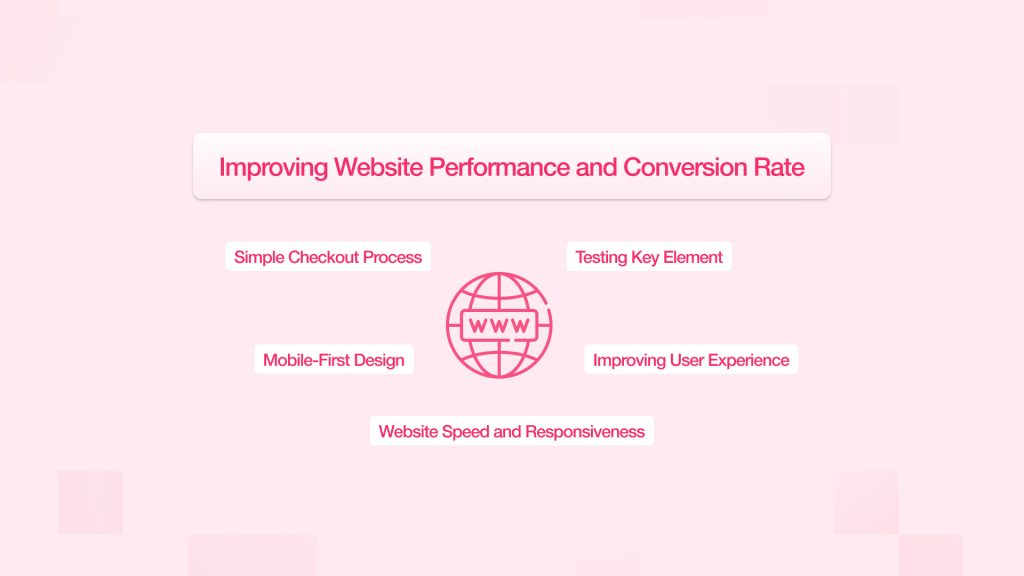
Website Speed and Responsiveness
If your site’s slow or clunky, especially on mobile, people will bounce before they even see what you’re offering. Make sure your images are optimised, your code’s clean, and your hosting can keep up. A few seconds can make or break a sale.
Simple Checkout Process
The fewer hoops people have to jump through, the better. Offer guest checkout, multiple payment options and payment gateways, and a clear sense of progress. Oh—and keep distractions to a minimum on the checkout page. This is not the place to upsell or redirect.
User Experience
Visitors should be able to find what they’re looking for fast. Clean menus, solid search functionality, and smart product categories go a long way toward making the experience smooth (and sales more likely).
Mobile-First Design
Most of your traffic is coming from phones these days, so your site has to look and work great on smaller screens. No pinching or zooming—just a clean, seamless mobile experience using mobile-first design.
Testing Key Elements
Don’t assume you know what works best. Try out different calls to action, button colours, layouts, and copy. A/B testing helps you see what actually gets clicks—and what doesn’t—so you can keep improving.
Need Stunning Web Development Services
We Can Help!
Smart Bid Management and Budget Allocation
Keeping your ad spend in check while you’re scaling is super important—you don’t want to blow your budget chasing growth that doesn’t stick.
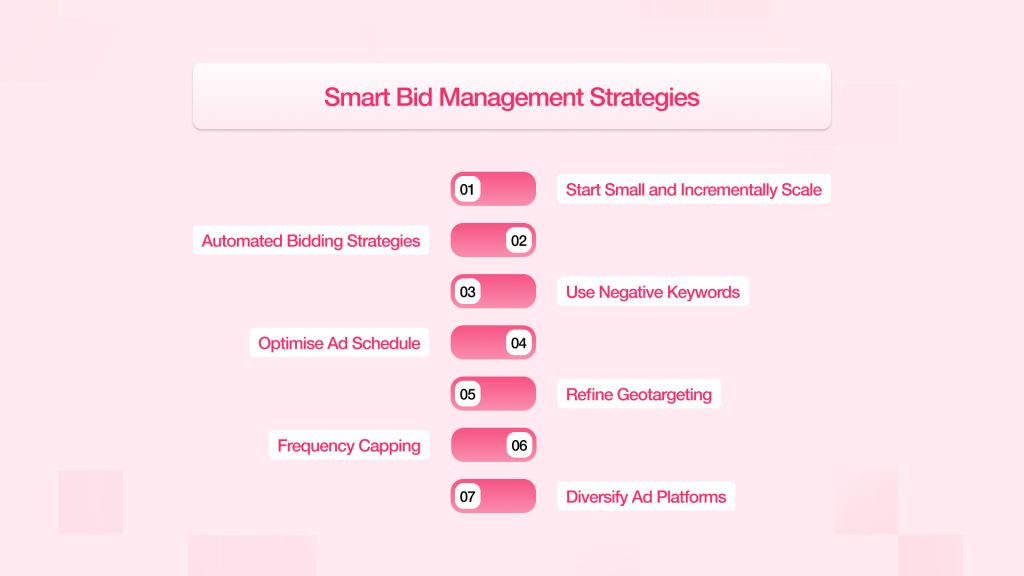
Start Small and Incrementally Scale
Don’t just throw a ton of money at your campaigns all at once. Instead, bump up your budget little by little—think 10 to 20% at a time—and watch how things go. If the numbers still look good, keep going.
Automated Bidding Strategies
Most platforms have bidding strategies like target ROAS or maximise conversions. They’re pretty powerful, but you gotta set them up right and keep an eye on them. Make sure the algorithms have enough data to work with.
Negative Keywords
This is a simple but often overlooked trick. Keep adding negative keywords so your ads don’t show up for irrelevant searches—this saves you from wasting cash on clicks that won’t convert.
Ad Schedule Optimisation
Look at when your ads perform best and adjust your bids accordingly. If certain hours or days tank, maybe pause ads during those times or lower your bids.
Geotargeting Refinement
If some locations aren’t pulling their weight, consider cutting them out or dialling down bids there.
Frequency Capping
Seeing the same ad too many times can annoy people and make your ads less effective. Set frequency caps so you don’t wear out your welcome.
Diversify Ad Platforms
It’s smart to stick with what works, but don’t be afraid to slowly test other places where your audience hangs out. Just keep those tests small and manageable—you don’t wanna put all your eggs in one basket or burn money on unproven channels.
Operational Efficiency and Automation
As you scale your ecommerce business, it’s not just about the ads and traffic—you’ve also gotta make sure the backend of your business can keep up with the growth.
Inventory Management Systems
Running out of stock (or sitting on too much) can throw a wrench in your plans fast. A solid inventory management system helps you avoid those headaches and keeps your cash flow healthy.
Order Fulfilment Automation
The more orders you get, the more important it is to have a smooth system in place for packing and shipping. If things start getting overwhelming, it might be time to look into a 3PL (third-party logistics) partner to help lighten the load.
Automated Customer Service
Tools like chatbots or AI-powered help desks can handle the routine stuff—like order status or return questions—so your team can focus on the more complex stuff that needs a human touch.
Marketing Automation Tools
Whether it’s scheduling emails, managing ad campaigns, or keeping your social media running, automation tools can save tons of time and help you stay on track as things get busier.
Scalable Infrastructure
As traffic and orders grow, your ecommerce platform and hosting need to be up to the task. If your site slows down or crashes under pressure, you’re not just losing sales—you’re also hurting your brand.
Avoiding Budget-Burning Mistakes as You Scale
Scaling a winning ecommerce campaign is exciting—but if you’re not careful, it can also be one of the quickest ways to burn through your budget.
Here are a few common mistakes that can sneak up on you if you’re not paying attention:
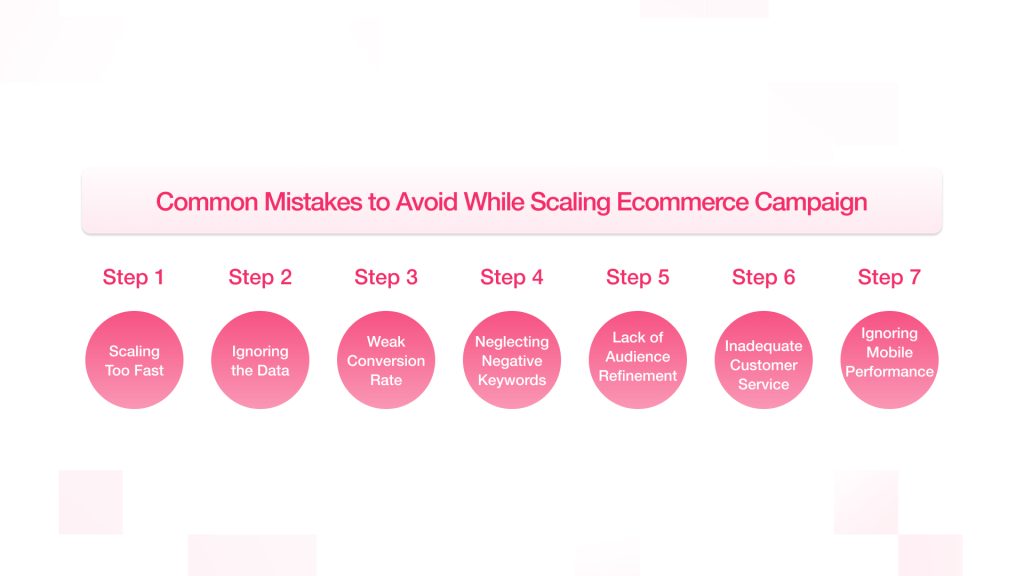
Scaling Too Fast
Once the results start rolling in, it’s super tempting to just crank up the ad spend. But if you scale too quickly without enough data (or a solid strategy), you can blow through your budget with very little to show for it.
Ignoring the Data
Gut feelings are excellent for picking a pizza. Scaling, on the other hand, asks for real numbers. Your decisions without data are really just guesses, and that gets pricey quickly.
Weak Conversion Rate
More traffic isn’t always the answer. If your site isn’t converting visitors, scaling just means you’re wasting more money. Before anything else, tighten up your product pages, simplify the checkout process, and make sure people trust your brand.
Neglecting Negative Keywords
If you’re running search ads and not updating your negative keyword list regularly, you’re probably paying for clicks from people who were never going to buy. Keep that list tight.
Lack of Audience Refinement
Everyone is not your customer. If you’re not narrowing down your audience or segmenting properly, you’ll end up spending money on people who just aren’t interested.
Inadequate Customer Service
Normal customer interactions could include a variety of things based on sales numbers: questions, complaints, and returns. If your teams are unable to manage these interactions efficiently, then you stand to lose your reputation as well as repeat business.
Ignoring Mobile Performance
We are now in an age where the majority of the traffic is generated from mobile. Mobile traffic has increased considerably, thus if your site isn’t fast, clean, and easy to navigate through mobile phones, then you are likely losing out on many sales.
Conclusion
When one can scale their winning ecommerce campaign to a larger stature one must strategize, rely on data, keep an open mind for possibilities, and employ endless iterations. You should aim for broader audience expansion, continuous, thorough creative and site improvements, clever bidding patterns, an orientation toward retaining clients, and smooth operational efficiency. Substantial growth with profitability is achievable with such an attitude.
Scaling must be set up as an iterative process, whereby incremental changes are implemented, performance is closely monitored, and one is continuously learning from the data. This disciplined way of working would ensure that the ecommerce business grows, expands its reach, and earns revenue sustainably, thereby giving it long-term sustainability without being anxious about a burnt-out budget.
 Shopify
Shopify